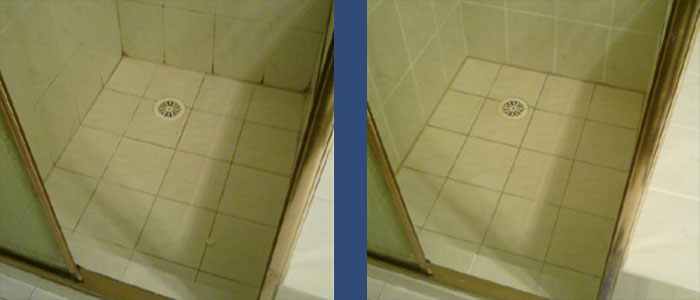Right here down the page yow will discover more first-rate information and facts related to Preventing Water Damage in the Bathroom.

The shower room is incredibly vulnerable for wet build-up and possible water damage due to the constant use of water in it. This article supplies easy inspection strategies to assist detecting water damages risks.
The frequent use water in the restroom makes it exceptionally susceptible for moist build-up and possible water damage. By evaluating it frequently, you can reduce water associated damages.
The adhering to set of examinations is easy to do and should be done as soon as in every three months in order to maintain your shower room in good shape and also to avoid possible water damages caused by the tub, the shower, pipe joints and also plumbing, sinks, cabinets, and also the toilet
Do not disregard performing these assessments and also be comprehensive while doing them. Keep in mind that these easy examinations can save you a great deal of cash by offering very early indications for water damages
Sinks as well as Cabinets
Sinks and also cabinets are revealed to moisture as well as humidity everyday and also are typically forgotten. Examine consistently under the sink and on the kitchen counter above it. Repair any kind of drip in the trap as it might recommend drain troubles. Look around the sink, sluggish draining pipelines may suggest an obstructed drain. Replace sink seals if they are fractured or loose.
Tub and also Shower
The shower and tub call for special interest as well as upkeep. Check the ceramic tiles and also replace if broken. Make certain that there is no missing out on grout in between the floor tiles. Inspect as well as change fractured caulking at joints where the walls meet the flooring or the bath tub. Obstructed drains and pipes troubles will certainly prevent the tub from drying out and also might indicate major issues underneath the bath tub. Consult with an expert right away to prevent structural damage. Take note of discolorations or soft areas around the tub walls as they may suggest an interior leak.
Plumbing
Signs for water damage are hard to discover because many pipes are mounted inside the walls.
Pay special attention to flooring and walls wetness as well as spots as they may suggest an undetectable plumbing issue. Inspect wetness levels in adjoining spaces also.
The Bathroom
The bathroom is a prone water joint. Inspect the water lines as well as search for leaks around the bathroom seat, in the hose pipe, and under the water tank. If you spot any signs of moisture on the flooring around the commode, look for leakages in the toilet edge as well as storage tank seals.
Understand that hanging toilet bowl deodorants raises the opportunities for obstructions.
How to Prevent Water Damage in Your Bathroom?
Water damage repair is an expensive, meticulous, and lengthy process. Unfortunately, bathrooms are the most susceptible rooms to water damage due to toilets, showers, and sinks. Pipes and fixtures wear out over time and are not immune to damage. But all is not lost, as there are ways to prevent water damage from occurring in your bathroom.
Check Your Plumbing
Nothing lasts forever, especially pipes, which can rust and begin leaking over time. You should periodically conduct pipe inspections and pay attention for any musty smells or water stains that may indicate you need water damage repair. Here are some things to check:
Frequently test valves for your toilet, shower, and sink to ensure they are properly working. Check faucet supply lines hidden under vanities and replace when needed. Replace cracked or deteriorating caulking along sinks, tubs, and showers. If you notice a clog in your sink, call in a professional. Since you can’t check the pipes in the wall, keep an eye out for stains, drywall bubbling, musty smells, and excess moisture; if the bathroom is on a second level, check the ceiling of the room directly below for these signs. Don’t Overwork Your Toilet
One of the most common reasons bathrooms need water damage repair is due to overflowing toilets. Save yourself the hassle of cleanup by being mindful and not pushing your toilet to extreme limits. If you have young children, it is especially important to keep an eye on them when they are in the bathroom and to teach them how to avoid clogging the toilet. Here are some more tips to help prevent your toilet from overflowing:
If you have a septic tank, only use septic-safe toilet paper Do not flush anything down the toilet besides toilet paper; items like diapers and sanitary napkins will clog the piping Pay attention to your toilet’s water level: If it’s low, it could mean it is partially clogged or that there is a crack in the toilet bowl Maintain Your Shower/Tub
Replace showers or tubs with cracks or other damage; even hairline cracks can allow water to seep in and cause damage. Grout and caulk help prevent water from seeping into walls and floors, so repair them if they are chipped, cracked, or deteriorating. Replace torn shower curtains or shower doors with seals that no longer work. Dry the floor and drain water from the tub immediately after use to prevent damage from sitting water. https://www.alure.com/home-improvements-blog/resources/how-to-prevent-water-damage-in-your-bathroom

As a reader on Common Causes of Water Damage in a Bathroom, I imagined sharing that piece was mandatory. Are you aware of anybody else who is inquisitive about How to Repair and Prevent Bathroom Water Damage? Feel free to promote it. I cherish reading our article about How to Fix a Water Damage Bathroom.
Book Your Appointment